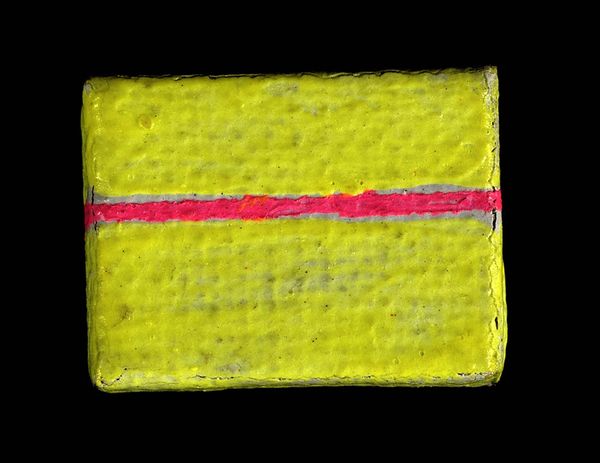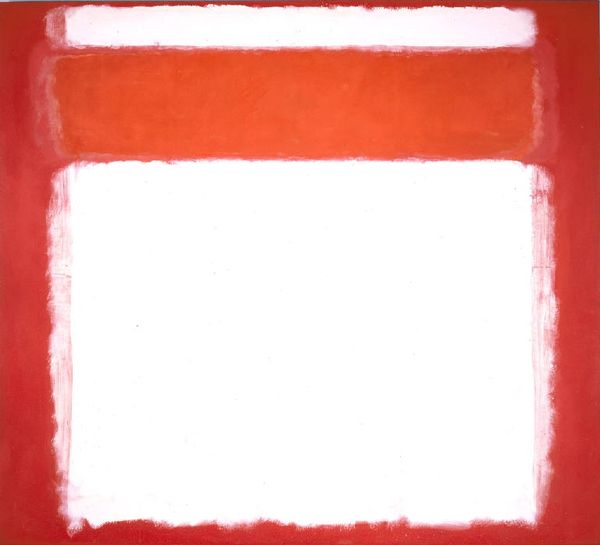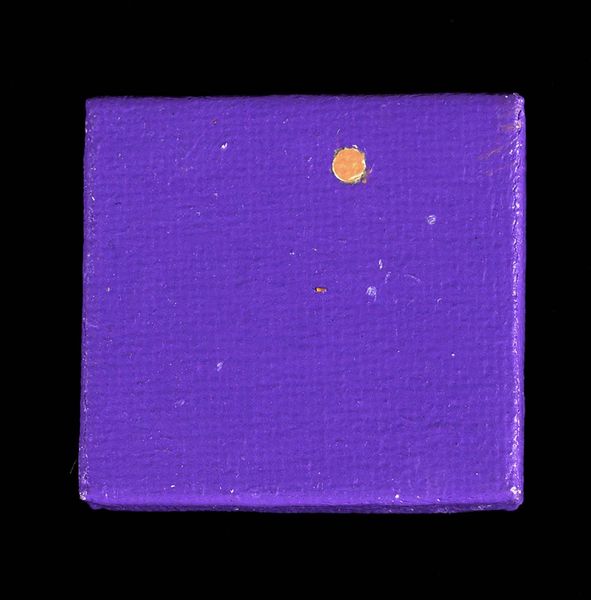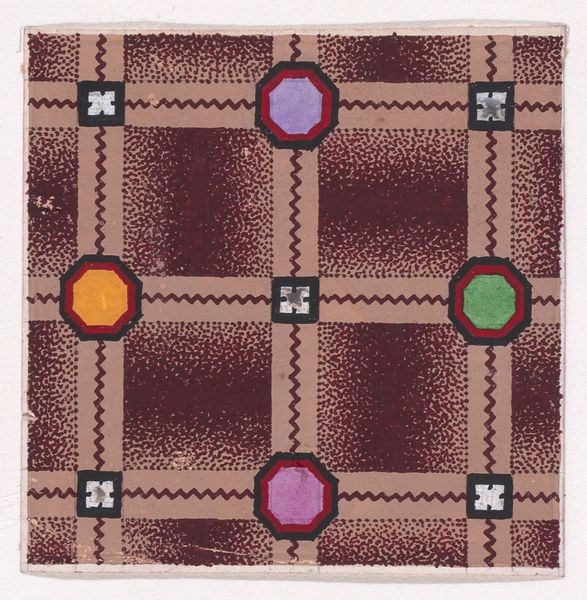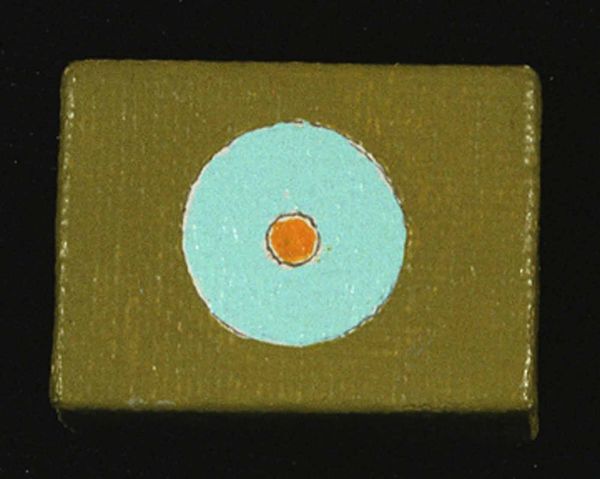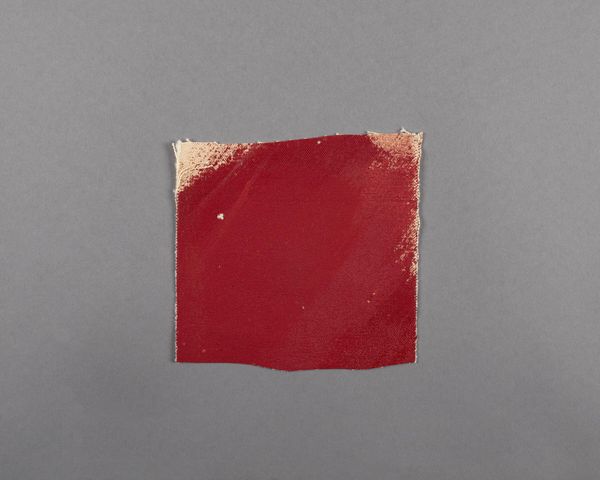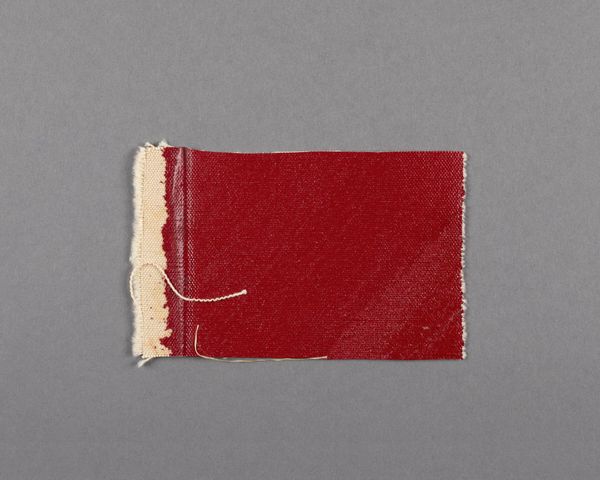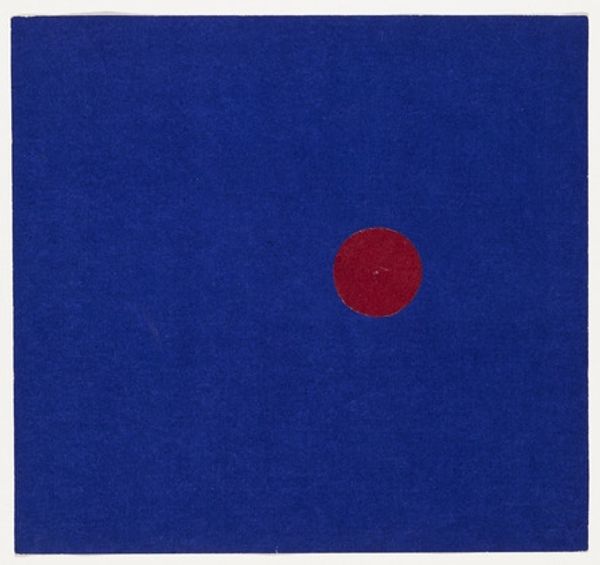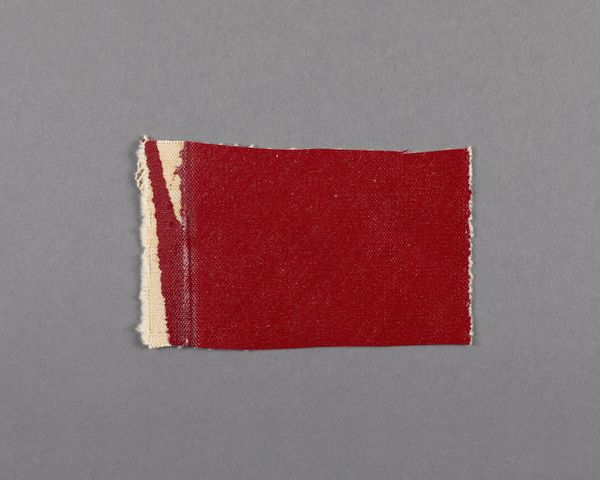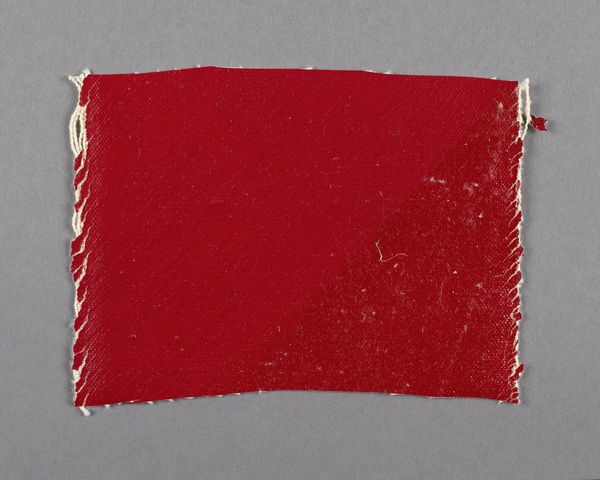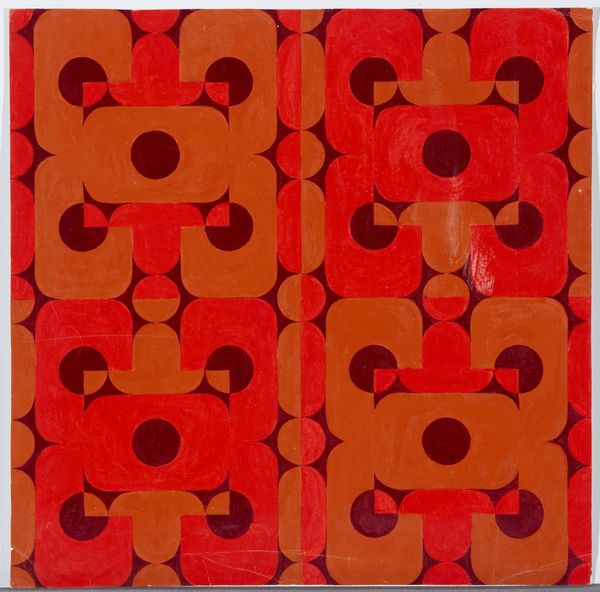
painting, oil-paint
#
natural stone pattern
#
painting
#
man-made pattern
#
oil-paint
#
circle
#
colour-field-painting
#
geometric pattern
#
subtle pattern
#
rectangle
#
minimal pattern
#
organic pattern
#
geometric
#
repetition of pattern
#
abstraction
#
pop-art
#
pattern repetition
#
layered pattern
#
repetitive pattern
Copyright: Gene Davis,Fair Use
Curator: So, here we have Gene Davis’s *Micro-Painting* from 1968, executed in oil paint. What's your initial read? Editor: It's incredibly simple, almost childlike – a yellow rectangle with a red circle. But the texture of the paint makes it feel almost like…worn down. What do you see in it? Curator: The immediate appeal, of course, lies in the stark juxtaposition of color and form. However, let’s consider Davis's practice and its historical context. As part of the Washington Color School, he moved away from gestural abstraction, favoring flatness and pure color. It's tempting to view this as simple abstraction, but think about the *making*. What are the implications of this move towards industrial processes within the art world? The very visible brushwork in this painting belies this notion of mechanical reproduction, it becomes almost an ironic gesture. Editor: So you are saying the paint application pushes against the idea of pure, mass-produced color? Curator: Exactly. The materials and their application become very important here. It acknowledges the artist’s hand and highlights the physical properties of paint – its texture, opacity, even its tendency to crack over time. What might the rough, almost crumbling surface signify about art's role and production in the late '60s? Editor: It’s almost as if it is embracing the imperfect and handmade against the perfection of Pop Art or Minimalism that were also popular at the time. It shows the wear of the process and the material itself. Curator: Precisely. By focusing on the physicality of the paint and its application, Davis redirects our attention to the labor and the means of production, challenging any clear division between painting, object, and commodity. Editor: That gives me a new appreciation for what seems like a simple painting. Thanks for shedding some light on it. Curator: Indeed, considering art through its materiality opens a wider lens to critique and interpret.
Comments
No comments
Be the first to comment and join the conversation on the ultimate creative platform.
